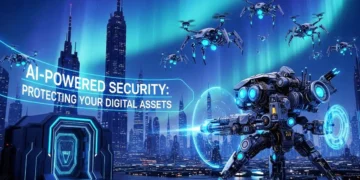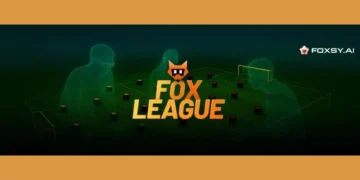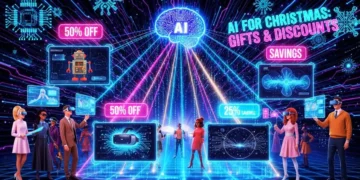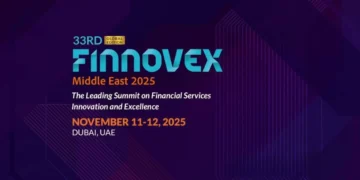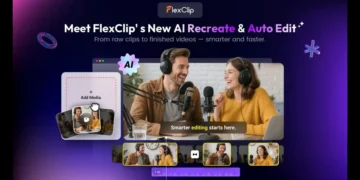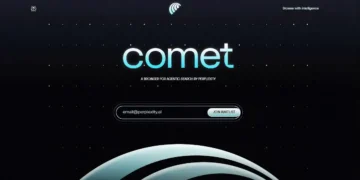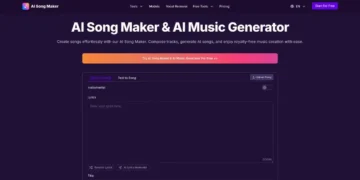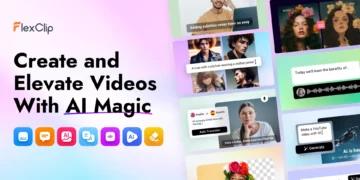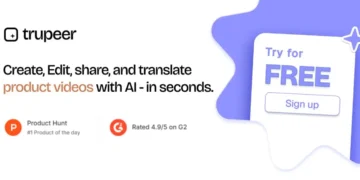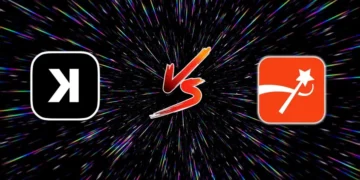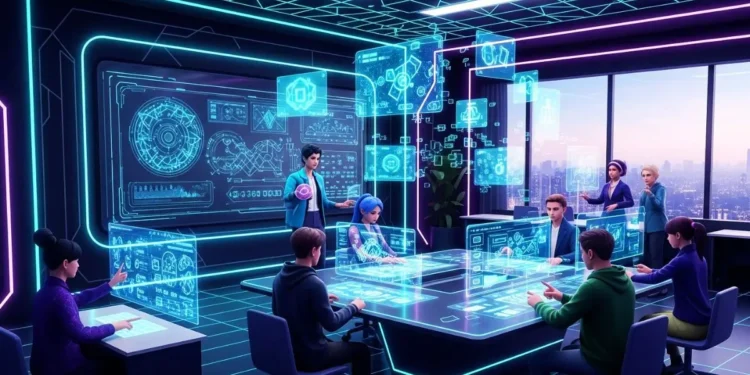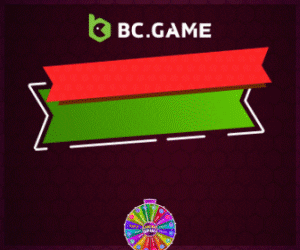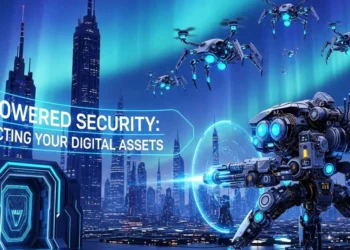What if a student living in a far-flung village could not only get a certificate to prove completion of an online course but also have it in the form of a verifiable, tamper-proof digital credential that is theirs forever? Subsequently, they could employ that credential to gain access to an international labor market and simultaneously be rewarded with tokens for their educational development. Such a scenario is not in a sci-fi flick; it is the very concrete future that is being constructed today by Web3 in education.
Web3 technologies’ amalgamation is solar to overhaul the educational sector. Most conversations emphasizing finance and art, the most profound and unexpected changes are in learning, teaching, and knowledge verification. One survey shows the online education market is expected to reach $370 billion by 2026, partly driven by these new technologies.
However, how is this actually manifested on the ground? This article will immerse the readers into the in-depth unpredictable use cases of Web3 in education, as it moves past the exaggerated claims to uncover those real-world applications that are making learning more personalized, encouraging and accessible at a global level.
What is Web3 and Why Should Educators and Marketers Care?
Before diving into the use cases, let’s establish a clear baseline. The internet has evolved in phases:
Web1 (The “Read-Only” Web): A static library of information where users were primarily consumers of content.
Web2 (The “Read-Write” Web): The social and interactive web we use today, dominated by platforms like Facebook, Google, and Amazon, where users create and share content, but the platforms own and monetize the data.
Web3 (The “Read-Write-Own” Web): The next iteration, built on decentralized technologies like blockchain. In this model, users, not corporations, own their data and digital assets. It’s powered by principles of transparency and user-centric control.
What exactly is Web3 in Education?
Before we deepen into the possible use cases, it is necessary to understand what Web3 means. Web3, or Web 3.0, is the next generation of the internet. The key features on which it is based are decentralization, blockchain technology, and user ownership. Unlike Web2, where data and control are concentrated in a handful of large companies (e.g., social media platforms), Web3 is designed to empower users with the control of their data, identities, and digital interactions.
Specifically, in the field of education, this indicates moving from institution-centric systems to learner-centric ecosystems. Students can have their educational achievements recorded in a secure and trusted way, teachers can get paid directly for their work, and learning could be changed to a non-stop, interesting, and even rewarding experience.
The Driving Forces: Key Web3 Technologies
Several key technologies underpin these new educational models:
Blockchain: A secure, distributed digital ledger that records transactions and data across a network of computers. Its immutability and transparency make it ideal for storing academic credentials and tracking progress .
Smart Contracts: Self-executing contracts with the terms of the agreement directly written into code. In education, they can automate processes like issuing a certificate upon course completion or distributing rewards .
Tokens and Cryptocurrency: Digital assets that can be used to incentivize participation, reward achievement, and facilitate transactions within educational platforms.
Decentralized Autonomous Organizations (DAOs): Member-owned communities that operate through democratic voting and shared treasuries, enabling new models for governing educational institutions and learning communities .
Non-Fungible Tokens (NFTs): Unique digital assets that can represent ownership of anything from a piece of art to a specific academic credential or a membership pass to a learning community .
Unexpected Web3 Use Cases Transforming Classrooms
Now, let’s explore the specific and often surprising ways these technologies are being applied in education.
1. Tamper-Proof and Student-Owned Academic Credentials
The Problem: Traditional diplomas and transcripts can easily be forged. Verification of them is a tedious task and they are under the control of institutions. Students, therefore, have to go through a slow and expensive procedure to have their records shared with employers or other schools.
The Web3 Solution: Blockchain for education is the perfect fit because it allows one to create lifetime digital transcripts. Simply put, when a student finishes a degree or course, the credential is given and registered on a blockchain. Thus, a permanent, unalterable record is formed that the student can always access and can share with anybody through a simple link or digital wallet.
Real-World Example: Some of the foremost institutions such as MIT, Georgia Tech, and the University of Padua have already established connections with platforms like Blockcerts in order to issue verified digital diplomas. Besides, the Ethiopian government teamed up with IOHK (Input Output Global) to implement the delivery of on-chain credentials for students from every corner of the country, giving a vivid example of the accessibility of the national-level rollout program.
2. Learn2Earn: Incentivizing Learning with Tokenized Rewards
The Problem: Student motivation and course completion rates continue to be major issues both in traditional and online education. A significant number of learners are disengaged and do not complete their studies, mostly because they receive no immediate rewards for their efforts.
The Web3 Solution: The “Learn2Earn” concept just reverses everything by remunerating learners with crypto or tokens for their interaction with the educational content. This application of game principles in education “levels up” the student’s experience and makes learning more profitable.
Real-World Example: For instance, BitDegree platform provides the incentives for learning through tokenized scholarships and a gamified setup where students complete quests. Besides, DirectEd runs coding courses in Kenya and Ethiopia where it allocates scholarship funds to students in the form of tokens only after they have passed the monthly exams, thus directly linking the financial support to the educational milestones.
3. Decentralized Learning Communities (DAOs)
The Problem: Educational institutions of the traditional type often exhibit slow adaptivity, are structured hierarchically, and are costly. Students and teachers, in most cases, do not have much control over the curriculum or the overall direction of their studies.
The Web3 Solution: Decentralized Autonomous Organizations (DAOs) are establishing learning ecosystems which are owned and governed by the community. In a learning DAO, members with governance tokens vote on literally everything from which courses to finance to how to distribute the community treasury.
Real-World Example: Dream DAO is an excellent example as it offers training and funding to Gen-Z students to work on Web3 social impact projects. By being a SkywalkerZ NFT holder, members are allowed to govern the organization’s future among other voting rights. Additionally, Crypto, Culture, & Society, is a course organization, which through its community-led curriculum and budget, explores the philosophical and ethical aspects of Web3.
4. Dynamic NFTs for Unlocking Educational Pathways
The Problem: Static resumes and CVs usually lack characters to express a person’s skills and the lifelong learning journey.
The Web3 Solution: Dynamic NFTs could be the perfect example of a continuous learning record. Visualize an NFT that automatically changes and updates with your educational achievements, new certificates of accomplishment, and skills. Additionally, it may serve as a key, providing access to advanced courses only after mastering the basics.
Real-World Example: As mentioned in a LAB51 roundtable, one of the ways to use NFTs is for memberships and to keep track of a student’s complete learning path. Thus, a student, an education provider, and future employers get a transparent, verifiable record of progress. The SheFi project also employs a soulbound (non-transferable) membership NFT to provide access to its educational content and community.
5. Empowering Educators with Direct Monetization
The Problem: Talented educators are the ones, who get only a small part of the money their courses bring, while most of the rest goes to platform intermediaries and institutions.
The Web3 Solution: Decentralized platforms allow teachers to take their courses straight to consumers without intermediaries . By using smart contracts and token-based systems, they become the recipients of direct and fair remuneration for their work and, moreover, be paid royalties when their educational content is resold or reused.
Real-World Example: The platform ODEM is such a marketplace that allows students direct communication with academic professionals to agree a tailored learning experience, with payments and certification done on the blockchain . This “unbundling” of education from traditional degrees is the faculty of individual educators .
6. The Eduverse: Immersive Learning Experiences
The Problem: Online learning is often disconnecting from the social aspect and the comprehensive engagement of the physical classroom.
The Web3 Solution: The idea of the “Eduverse“—an educational metaverse—comes from the use of metaverse technologies to create attractive, interactive learning environments. Just think about it! Teachers and students can be avatars who visit the virtual school of the past or zoom in on a 3D model of a complicated protein.
Real-World Example: Although it is still in its infancy, the k20 Educators‘ Eduverse project is designed to be a one-stop virtual place for teachers to connect, get professional development, share lesson plans in exchange for tokens, and even explore new career opportunities. Moreover, companies such as BMW are already exploiting the digital twins of their factories for staff training purposes, which is a practice that can be effortlessly adapted to the education sector.
Table: Summary of Key Web3 Educational Use Cases
| Web3 Use Case | Core Technology | Key Benefit | Real-World Example |
|---|---|---|---|
| Academic Credentials | Blockchain | Prevents fraud, gives student control | Blockcerts, MIT Digital Diplomas |
| Learn2Earn Models | Tokens / Crypto | Increases motivation & completion | BitDegree, DirectEd |
| Learning DAOs | DAOs / Governance Tokens | Community-owned education | Dream DAO, Crypto, Culture, & Society |
| Dynamic NFTs | NFTs | Tracks & unlocks learning pathways | LAB51’s model for student transcripts |
| Teacher Monetization | Smart Contracts | Fair pay, direct-to-student sales | ODEM Platform |
| The Eduverse | Metaverse / VR/AR | Immersive, collaborative classrooms | k20 Eduverse, Corporate Training (BMW) |
Revolutionizing Credentials: How Blockchain is Used in Education
Perhaps the most discussed and impactful use case of Web3 in the educational sector is the management of academic credentials. The current system is plagued with inefficiencies and fraud. How many resources are wasted verifying transcripts and diplomas?
Immutable and Verifiable Records
Imagine a world where a student’s diploma is as secure and easy to verify as a Bitcoin transaction. This is a reality with blockchain.
How it works: Universities and educational institutions can issue digital diplomas and certificates directly on a blockchain. Each credential becomes a unique, tamper-proof digital asset.
The ROI: This eliminates credential fraud, streamlines the hiring process for employers who can instantly verify qualifications , and provides students with permanent, undisputed ownership of their achievements. Institutions like MIT are already pioneering this by issuing blockchain-based digital certificates.
The Learner Profile Passport
This goes beyond single diplomas. Web3 in education enables the creation of a comprehensive, student-owned “Learner Passport.” This secure digital wallet could contain a student’s entire educational journey:
Official degrees and diplomas.
Micro-credentials and skill badges.
Project portfolios and real-world experience.
Academic records and transcripts.
Students would have full control over their data, deciding who to share it with and when. This empowers learners to truly own their educational identity, creating a verifiable and holistic view of their skills for potential employers.
The Challenges and Controversies of Web3 in Education
Of course, this transition is not without its hurdles and critics. It’s crucial to address the legitimate concerns surrounding Web3 in education.
The Hype vs. Reality: Some experts, like Kevin Werbach of the Wharton School, caution that blockchain credentials are currently a “solution in search of a problem,” noting we are a long way from widespread impact on higher education .
Data Privacy and Permanence: If every academic misstep is recorded on an immutable ledger, what does that mean for a student’s right to be forgotten? As Professor Roxana Marachi questions, these permanent records could have significant implications for data privacy .
Commercialization of Learning: There is a valid concern that these systems could transform schools from sites of teaching and learning into marketplaces for buying and selling, potentially exacerbating inequality .
Technical Barriers: The user experience of managing crypto wallets and navigating dApps (decentralized applications) can be daunting for new users, creating a barrier to entry .
Regulatory Uncertainty: The legal status of DAOs, tokens, and blockchain-based credentials is still unclear in many jurisdictions, creating uncertainty for institutions .
Environmental Impact: While transitioning to more energy-efficient consensus mechanisms, the environmental footprint of some blockchains remains a concern for sustainability-focused educators.
Beyond the Classroom Walls: Unexpected Web3 Use Cases in Education
While secure credentials are a powerful application, the innovation doesn’t stop there. The most unexpected Web3 use cases in education are those that reshape the learning experience itself.
The Rise of ‘Learn-to-Earn’ (L2E) Models
What if students could get paid to learn? The “learn-to-earn” concept, powered by token-based rewards, is a revolutionary incentive model.
How it works: Using smart contracts, educational platforms can automatically reward students with cryptocurrency tokens or NFTs for completing courses, acing exams, or contributing to a learning community.
The Impact: This gamifies education, boosts motivation, and provides a tangible ROI for a student’s time and effort. It can also open up educational opportunities for those who previously couldn’t afford to take time off work to study. Have you considered how this could increase your platform’s engagement rates?
Decentralized Autonomous Organizations (DAOs) for School Governance
A DAO is an organization run by code and controlled by its members, with no central authority. Think of it as a co-op on the blockchain. In education, DAOs could be used to create more democratic and transparent institutions.
Potential Applications:
Decentralized Funding: Crowdfunding educational initiatives or even new schools.
Curriculum Co-creation: Allowing students and educators to vote on course content and learning paths.
Transparent Management: Managing school budgets and resources in a fully auditable way.
The Metaverse as the New Global Classroom
The metaverse, a persistent, shared virtual space, offers the potential for truly immersive and collaborative learning. Powered by Web3, these aren’t just Zoom calls with avatars; they are interactive worlds.
Immersive Experiences: Biology students could perform virtual dissections, history students could walk through ancient Rome, and engineering students could build complex machinery together. STEM-focused metaverses for children are already in development.
Global Collaboration: Web3 in education breaks down geographical barriers, allowing students from around the world to learn and collaborate in a single, unified digital environment without intermediaries.
AI Tutors with Blockchain Integrity
Personalized learning powered by AI is already here, but Web3 in EdTech adds a crucial layer of trust. By recording an AI tutor’s interactions and learning path recommendations on a blockchain, we can ensure the integrity of the system, audit for bias, and verify its effectiveness in a transparent manner.
How Big is the Blockchain in Education Market?
The growth trajectory is explosive. The global blockchain in education market was valued at approximately $2.1 billion in 2024 and is projected to skyrocket to $30.3 billion by 2034, growing at a staggering CAGR of 30.4%. Other reports confirm this massive growth, indicating widespread adoption as institutions recognize the need for more secure and efficient systems. This isn’t a niche market; it’s the future of educational infrastructure.
Why is Web3 Controversial?
Despite its promise, it’s crucial to address the valid concerns. The path to a decentralized future is not without its challenges. The main reasons why Web3 is controversial include:
Security Risks: While blockchain itself is secure, smart contracts can have bugs or vulnerabilities that can be exploited. The mantra is “vigilance is your firewall”.
The Digital Divide: A move towards a tech-heavy educational model risks leaving behind students without access to reliable internet or the necessary devices.
Complexity and User Experience: Web3 platforms are often not as user-friendly as their Web2 counterparts, creating a steep learning curve for educators and students.
Data Permanence: The immutable nature of blockchain means that incorrect or sensitive data recorded by mistake can be nearly impossible to erase.
The Synergy with Online Learning
Many of these unexpected Web3 use cases in education are designed to supercharge the benefits of online learning. Let’s look at how they align.
What are the 10 advantages of online education?
Online education has become a cornerstone of modern learning. When combined with Web3, its advantages are amplified. Here are ten key benefits:
Flexibility and Accessibility: Students can learn from anywhere, at any time, accessing recorded lectures and materials at their own pace. This is a huge win for accessibility.
Affordability: Online learning reduces costs related to transportation, physical materials, and campus real estate, making education more affordable.
Personalized Learning Paths: Digital platforms can tailor coursework to individual learning styles and paces, an advantage that Web3 smart contracts can automate and enhance.
Variety of Courses and Programs: Online institutions can offer a wider array of specialized courses than traditional schools, unrestricted by physical location.
Development of Key Skills: Online learning naturally fosters self-discipline, time management, and digital literacy—critical skills for the modern workforce.
Improved Efficiency: Teachers can use a mix of videos, podcasts, and interactive tools to deliver lessons more efficiently.
Enhanced Interactivity: Through tools like VR, AR, and collaborative platforms, online education can be more engaging than a traditional lecture hall.
Global Networking: Students can connect and collaborate with peers and educators from diverse cultural backgrounds, fostering a global perspective.
Career Advancement: Online courses allow working professionals to upskill and advance their careers without having to leave their jobs.
Immediate Feedback: Many online platforms offer instant assessments and feedback, helping students master concepts faster.
The Future of Web3 in Education
Although the situation is difficult, the movement is gathering pace. Predictions show that the blockchain in education sector will expand by an astonishing annual growth rate of 76.46% between 2021 and 2026. Probably, traditional schools will combine new technologies such as Web3 with their current curriculum to provide more advanced educational resources instead of being totally taken over.
We can expect a greater focus on:
Lifelong Learning Portfolios: Dynamic, on-chain resumes that grow with you throughout your career.
AI and Web3 Integration: AI-powered personalized learning paths, with progress and achievements secured on the blockchain.
Stronger Decentralized Science (DeSci) Movements: Using DAOs and tokens to fund and reward open-source research.
Conclusion
The incorporation of Web3 use cases in the educational field is leading the way for a new type of learning to be discovered. The entire transaction, between students, educators, and knowledge, is changed: tamper-proof credentials that are completely under your control and Learn2Earn models that give you back the value of your time and effort.
The journey is not without its bumps. There are a lot of technical and moral challenges that need to be addressed, however, the promise is so huge that we cannot afford to turn a blind eye to it. Web3 is painting a picture of a learning ecosystem that is not only more accessible but also more open and engaging, the one, which is spread all over the globe.
How do you feel about it? Would you like to become familiar with Eduverse or have your next certificate as an NFT? Why not sharing your vision of future education with others in the comments below?
Frequently Asked Questions (FAQs)
What is the most discussed use case of Web3 in the educational sector?
One of the most prominent and widely discussed use cases is the implementation of blockchain for secure, verifiable, and student-owned academic credentials. This solves long-standing issues of credential fraud and gives learners permanent control over their own academic records .
What is an example of Web 3.0 in education?
A concrete example is BitDegree, an online education platform that uses blockchain technology to offer a gamified learning experience. Students can earn tokenized scholarships and receive crypto rewards for completing courses, while all their certificates are stored on the blockchain, making them easily verifiable by employers .
How is blockchain used in education?
Blockchain in education is used in several key ways: for enhanced record-keeping of diplomas and transcripts , to power smart contracts that automate course credit issuance , and to create token-based reward systems that incentivize student learning and achievement .
Why is Web3 controversial?
Web3 is controversial in education for several reasons. Critics worry it could lead to the over-commercialization of learning, turning classrooms into marketplaces . There are also significant concerns about data privacy due to the permanent nature of blockchain records , and skepticism about whether it offers real solutions or is merely a technology in search of a problem .
How big is the blockchain in education market?
The market for blockchain in education is experiencing explosive growth. Analysts predicted that from 2021 to 2026, its use in education would grow at a compound annual growth rate (CAGR) of 76.46% globally .
What are the 10 advantages of online education?
While the search results do not provide a specific list of ten, they highlight several key advantages of modern online education, especially when powered by Web3:
Accessibility: Learning from anywhere in the world.
Personalization: AI and data can tailor content to individual needs .
Gamification: Makes learning more engaging and motivating .
Instant Feedback: AI tools can provide immediate support .
Ownership of Credentials: Students control their own academic records with Web3 .
Direct Incentivization: Learn2Earn models provide financial rewards for learning .
Community Governance: DAOs give learners a voice in their education .
Reduced Fraud: Blockchain ensures the authenticity of credentials .
Immersive Experiences: Metaverse tech creates engaging virtual classrooms .
Lifelong Learning: Supports continuous education beyond traditional degrees .
